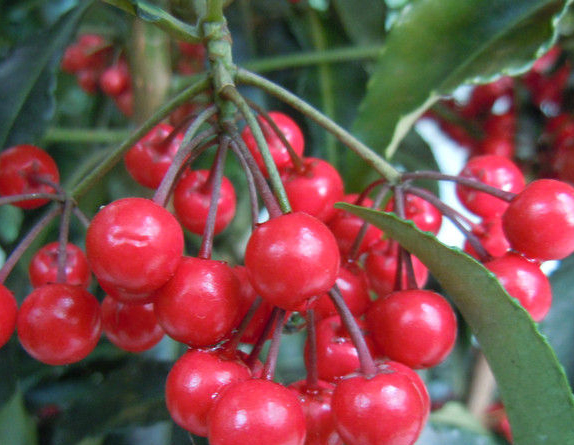What are the common diseases and insect pests of Dashantong?
The disease of paulownia is mainly withered nematode disease, which is caused by nematode infection, harms tender stem, young plant, surface stem and petiole base, softens and decays in the form of water immersion, and the disease part extends gradually from the leaf base to the leaf, and the injured leaf shrinks and browns and dies. Mature plants start from the petiole damage, gradually expand, do not soften. The prevention and treatment methods are as follows: the soil and flowerpots used in the seedling bed should be disinfected with steam or chloropicrin, and the tubers should be soaked in 60 degrees warm water for 5 minutes or disinfected with Uspuron, remove the injured plants, burn them or bury them deeply.

3. Botrytis cinerea
Botrytis cinerea is the main disease of paulownia, which can be damaged by leaves, petioles, petals and so on. It shows brown soft rot on the pedicel, and brown spots often occur from the edge, and there are wheel wrinkles on the surface, which can be extended to the whole leaf. When it is wet, it produces a gray mildew layer, and then turns yellow. In severe cases, the whole leaves, flowers and branches turn brown and die.
Solution: during the onset of the disease, use 80% Dyson zinc 500 times solution, or 1% Bordeaux solution, 75% chlorothalonil 500 times solution, spray once every 10 days, spray 2 Mel 3 times successively.
4. Paulownia blight
The blight can occur on the leaves, tubers and roots of paulownia. The leaves soften in the form of dark brown water stains after they are infected, and cause the leaves to rot after spreading to the petioles, and there are water-stained narrow and concave spots, which often expand and fuse into large spots or long strips, and sometimes the stem disease spreads to the petiole, causing the leaves to collapse.
Solution: spray 72.2% Purek 600 times solution or 72% Kelou wettable powder 600 times solution at the initial stage of the disease, 60% trimethoprim. Manganese zinc) 1000 times solution of wettable powder and 25% metalaxyl wettable powder.
5. Thrips
Thrips are common pests of paulownia, mainly injuring leaves and flowers, causing leaf deformities, producing maculae, stopping plant growth and so on.
Solution: usually pay attention to timely removal of thrips host plants, such as weeds, spraying chlorpyrifos, Qixingbao EC, insecticidal double water agent, wind and lightning shock and other control.
More information on the prevention and control of diseases and insect pests of paulownia
The common diseases and insect pests of paulownia are leaf blight nematode, rot, inchworm, red spider and so on. Next, let's take a look at the prevention and control methods of diseases and insect pests of paulownia.
The harm of common leaf blight nematode disease in paulownia is serious. in addition to timely removal of diseased plants and burning, pots, tubers and soil need to be disinfected. Quenching disease is easy to occur in seedling stage, so pay attention to the disinfection of sowing and transplanting soil. During the growing period, inchworms often bite buds, which can be killed artificially or put carbofuran into the basin to prevent and cure.
Control methods of diseases and insect pests of paulownia 1. Leaf withered nematodes
The disease is mainly leaf blight nematode disease, which is caused by nematode infection, harms tender stem, young plant, interland stem and petiole base, softens and decays in the form of water immersion, the disease part extends gradually, extends from the leaf base to the leaf, and the injured leaf wrinkles and browns and dies. Mature plants start from the petiole damage, gradually expand, do not soften.
Control methods of Caulownia leaf withered nematode:
(1) disinfect seedbed soil and flowerpots with steam or chloropicrin.
(2) the tubers were soaked in 60 ℃ warm water for 5 minutes or disinfected with Uspulum.
(3) remove the injured plant, burn it or bury it deeply.
Control methods of paulownia diseases and insect pests 2. Paulownia rot
The rot mainly harms the leaves, stems and young plants of paulownia, producing waterlogged dark brown necrotic spots on the leaves, showing wheel patterns in the spots, and in severe cases, the upper stem is distorted and dwarfed. The adult plant produces a large black sunken spot on the near-ground stem and fissures. The small black spots on the spot are arranged in a wheel shape with white hyphae on the edge.
Prevention and control methods of paulownia rot:
Spray the ground surface with 3 parts of formaldehyde and 1 part of water before planting, and cover the film, or mix 7 parts of 70% dimethasone powder with 3 parts of fine soil and sprinkle on the surface for disinfection. Usually pay attention to the cleanliness of the flower field, pull out the diseased plant in time, and burn it centrally, and avoid spraying water on the plant when watering.
In addition, the main pest of paulownia is inchworm, which eats plant buds during the growing period, which will cause serious losses. Carbofuran should be caught in time or applied to the basin soil for prevention and control. Under the condition of high temperature and drying, red spiders are easy to grow, so chemical control should be sprayed as soon as possible.
The maintenance of paulownia needs our care and patience in order to make it grow healthily. It is hoped that the prevention and control methods of diseases and insect pests can bring help to the friends who like to cultivate paulownia. For more information about Dayantong, please follow the hot agricultural materials information.
- Prev

How should the insect with waxy shell on cinnabar root leaf be treated?
This is the harm of shellfish. The main prevention and control measures should be chemical control, can use special agents, such as methophos, chlorpyrifos, Guoguang scale must die, the effect is good,-like agents are difficult to penetrate its wax layer to exert its efficacy. If the number of insects is large, it can be sprayed twice to completely eliminate. It can also be scraped or brushed off.
- Next

How to grow nephritis grass
How to grow nephritis grass
Related
- Fuxing push coffee new agricultural production and marketing class: lack of small-scale processing plants
- Jujube rice field leisure farm deep ploughing Yilan for five years to create a space for organic food and play
- Nongyu Farm-A trial of organic papaya for brave women with advanced technology
- Four points for attention in the prevention and control of diseases and insect pests of edible fungi
- How to add nutrient solution to Edible Fungi
- Is there any good way to control edible fungus mites?
- Open Inoculation Technology of Edible Fungi
- Is there any clever way to use fertilizer for edible fungus in winter?
- What agents are used to kill the pathogens of edible fungi in the mushroom shed?
- Rapid drying of Edible Fungi

